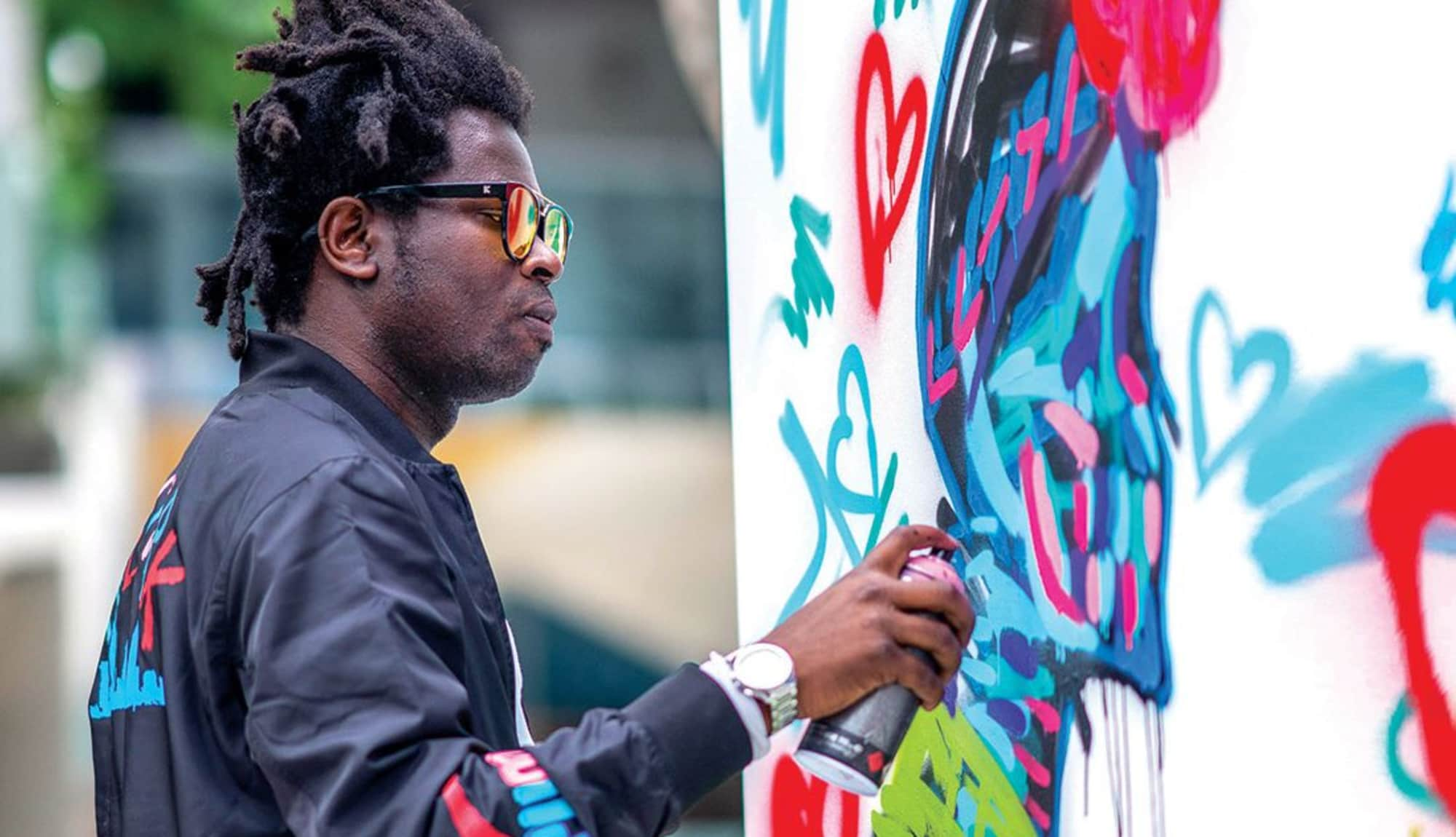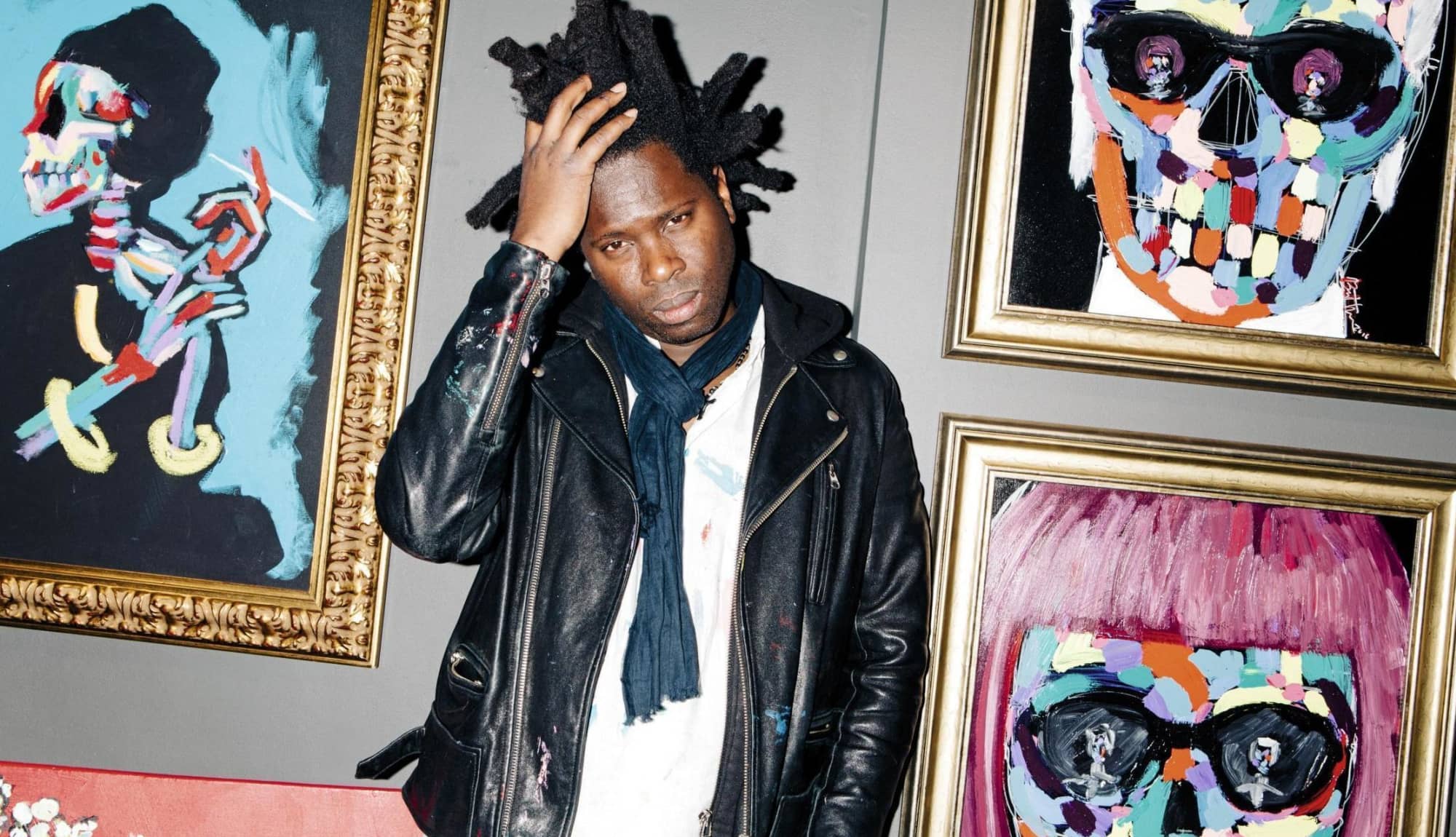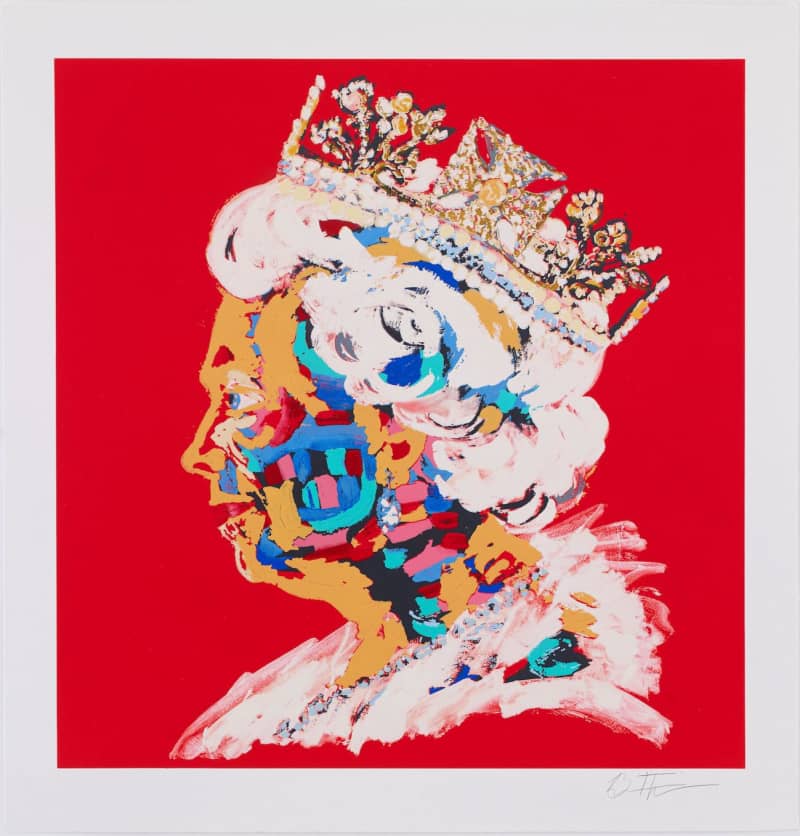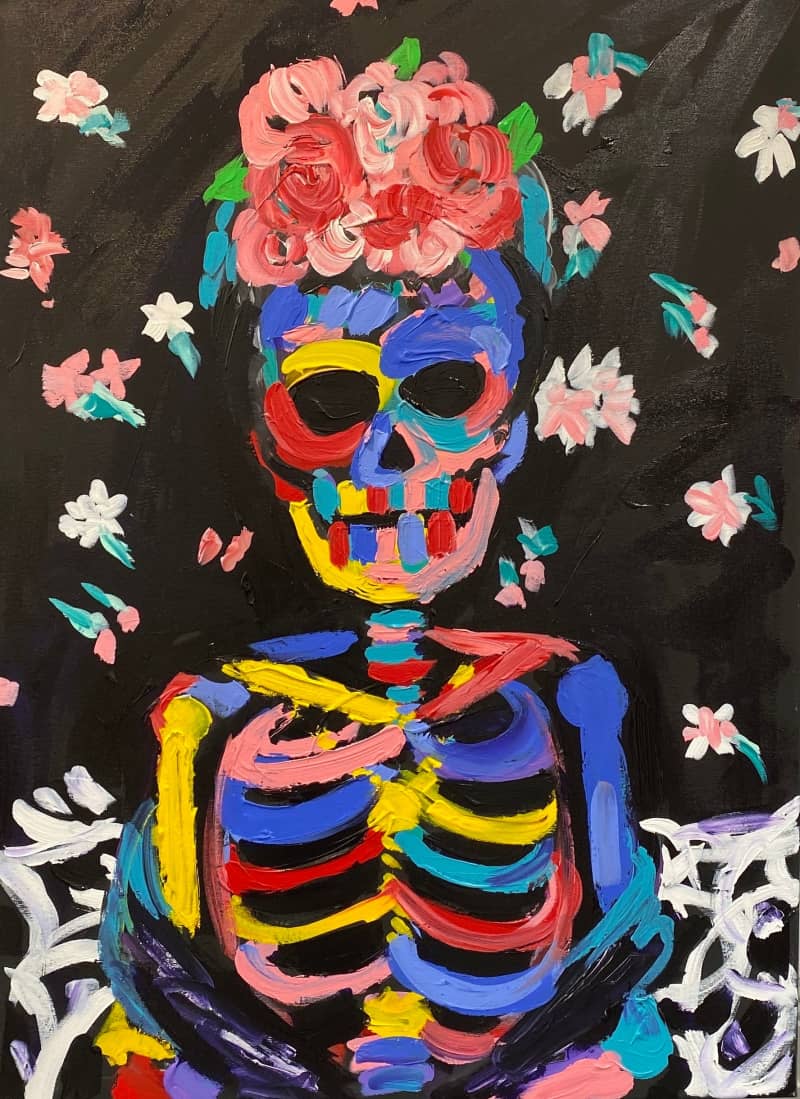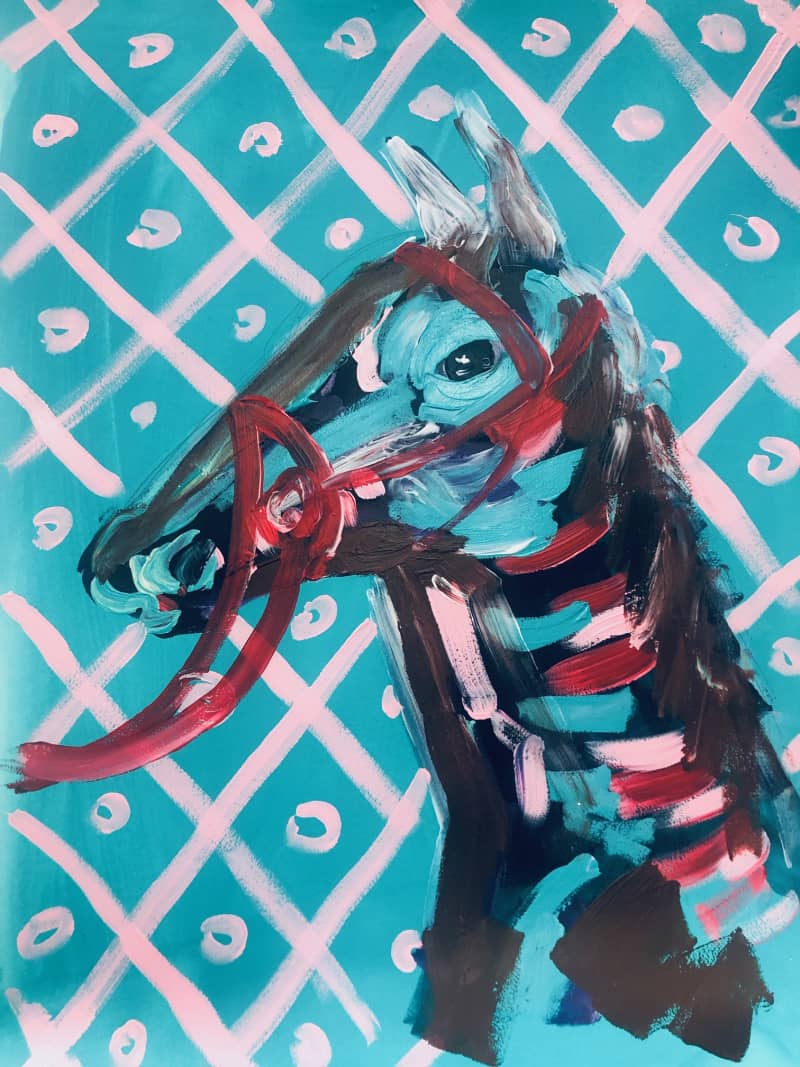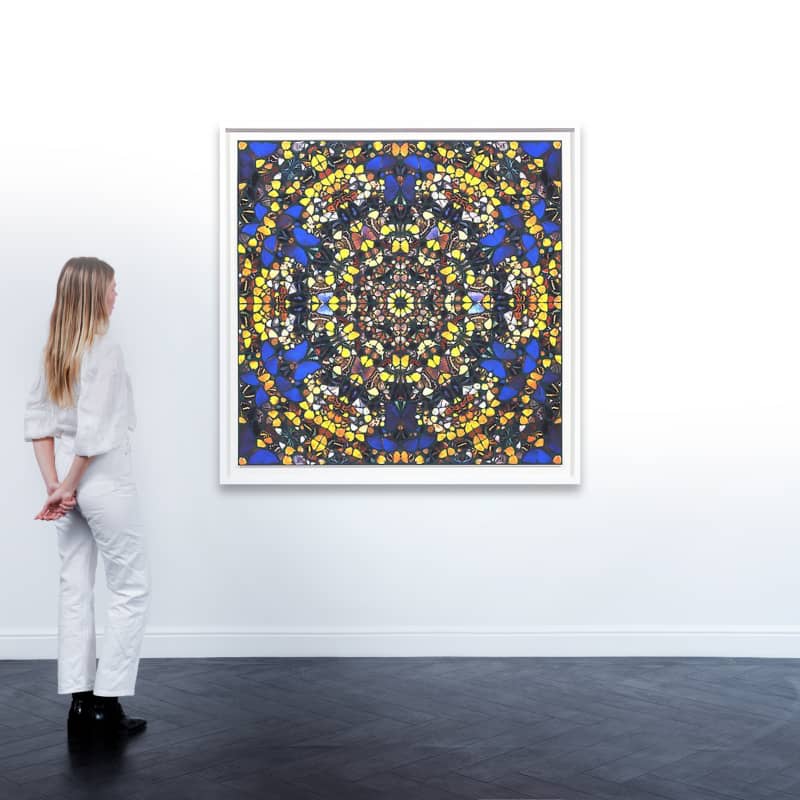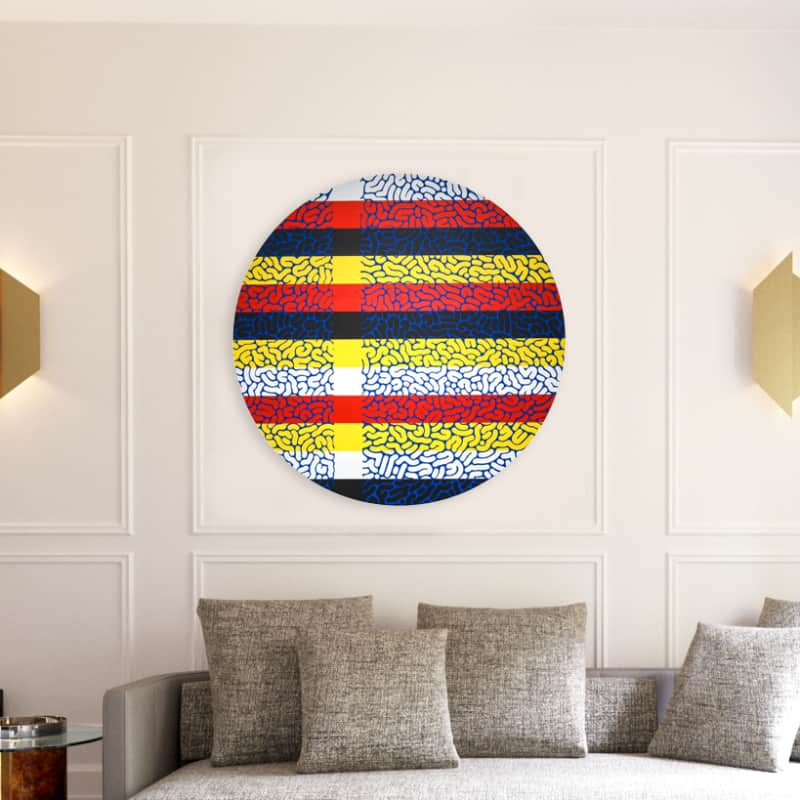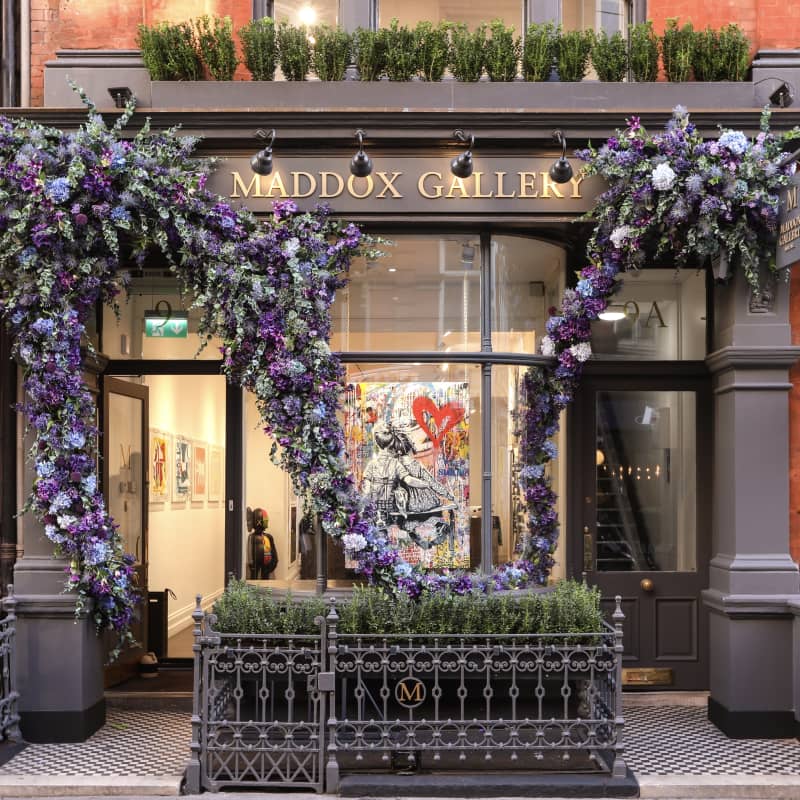Notable Works
Biography
“Street art allows you to be yourself. You’re not focused on trying to impress a curator or a particular museum. Your focus is on impressing the people who in return share your work with other people through social media and word-of-mouth”.
Turks and Caicos born American painter and street artist, Bradley Theodore, is known for his vibrant Día de los Muertos style murals and canvases depicting celebrity icons like Anna Wintour or Frida Kahlo. His signature leitmotif of the skull both immortalizes these influential cultural figures, as well as symbolizes the true spirit of his subjects. As a self-taught artist, Theodore’s influences are authentic and wide-ranging, from pop culture and the traditional art historical canon to the colourful, dynamic scene of graffiti and street art. Working across various media from prints and paintings to large-scale murals, Theodore’s practice engages with prominent themes within contemporary pop and visual culture as well as art history, exploring what it truly means to be human.
Born in the Turks and Caicos Islands, Bradley Theodore grew up in Miami, Florida and later moved to New York City where he embarked on his art career. The aesthetic influence of Miami’s vibrancy and bright colour palette continues to influence his artwork. Theodore taught himself painting by watching YouTube tutorials, as well as studying the techniques of canonical artists like Salvador Dali. Working as a digital designer in New York City, he immersed himself in the city’s buzzing artistic scene and started creating his first colourful murals featuring his iconic skeleton motif on the Lower East Side. One of his most famous works is Anna and Karl in New York, depicting Anna Wintour and Karl Lagerfeld in colourful skeleton-form in honour of their lasting friendship. This piece was a catalyst for Theodore’s popularity and success as a street artist. He was chosen as Google’s virtual artist in residence in 2016 and was the subject of a documentary in the same year entitled “Becoming: Bradley Theodore”, which premiered at the Tribeca Film Festival.
Since then, he has created murals and paintings depicting numerous celebrities including Kate Moss, Kendall Jenner, Cara Delevingne, and Queen Elizabeth II. His public works can be seen on the streets of Hong Kong, London, Los Angeles, Oslo, and Paris. He has also collaborated with designers such as PUMA, Moët & Chandon, Jordan Brand, RMK, Kent & Curwen and Moleskine. Aside from commercial collaborations, making public art remains of crucial importance to Theodore’s mission to contextualize his work outside of formal gallery settings.
Theodore’s technique is characterised by bold, gestural brushstrokes and fusing tropes of geometric abstraction and figuration. He captures the essence of his subjects’ personalities and signature looks by highlighting certain elements while stripping others back in a more abstract and minimal fashion. The artist stresses that the skull isn’t a symbol of death as such throughout his artworks, but rather a way of expressing emotion and an innate essence of an individual.
Alongside his notorious celebrity portraits, his recent works draw on famous works of art and reinterpret them in his quintessential style, such as the painting The Poker Players (2020) based on the Paul Cezanne original, and The Last Supper (2020) on Leonardo Da Vinci’s masterpiece. For his exhibition at Maddox Gallery, The Second Coming in 2017 that celebrated his collaboration with PUMA on their collection of sneakers, he created a series of sculptures as well as immersive digital works, which is a new territory the ever-evolving artist continues to explore. His latest exhibition with Maddox Gallery in 2018, The Coronation, saw Theodore turning to oil paint for the first time with his striking portraits of history’s regal anarchists, interpreting crucial historical moments in his signature Día De los Muertos style. Working with a rich array of symbols, his provocative compositions showcase the inherent chaos and corruption underlining the foundation of the modern Western world, prompting the viewer to look beneath the surface of what we now know as the contemporary society.
